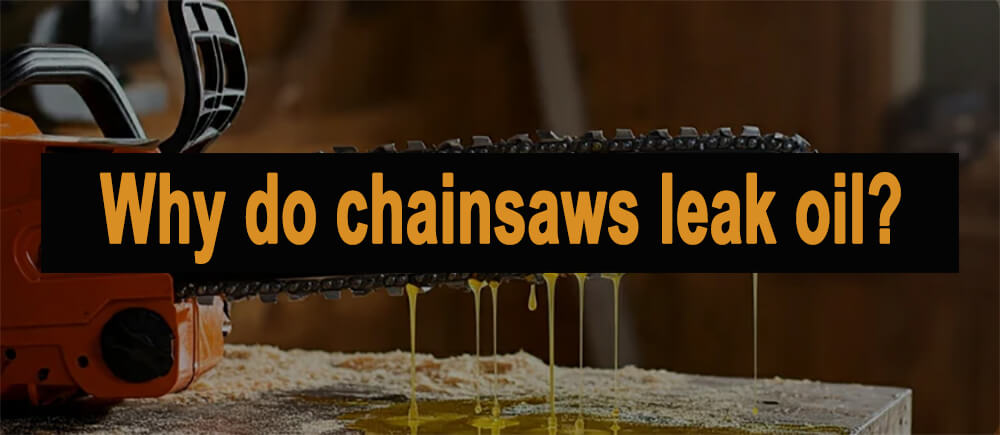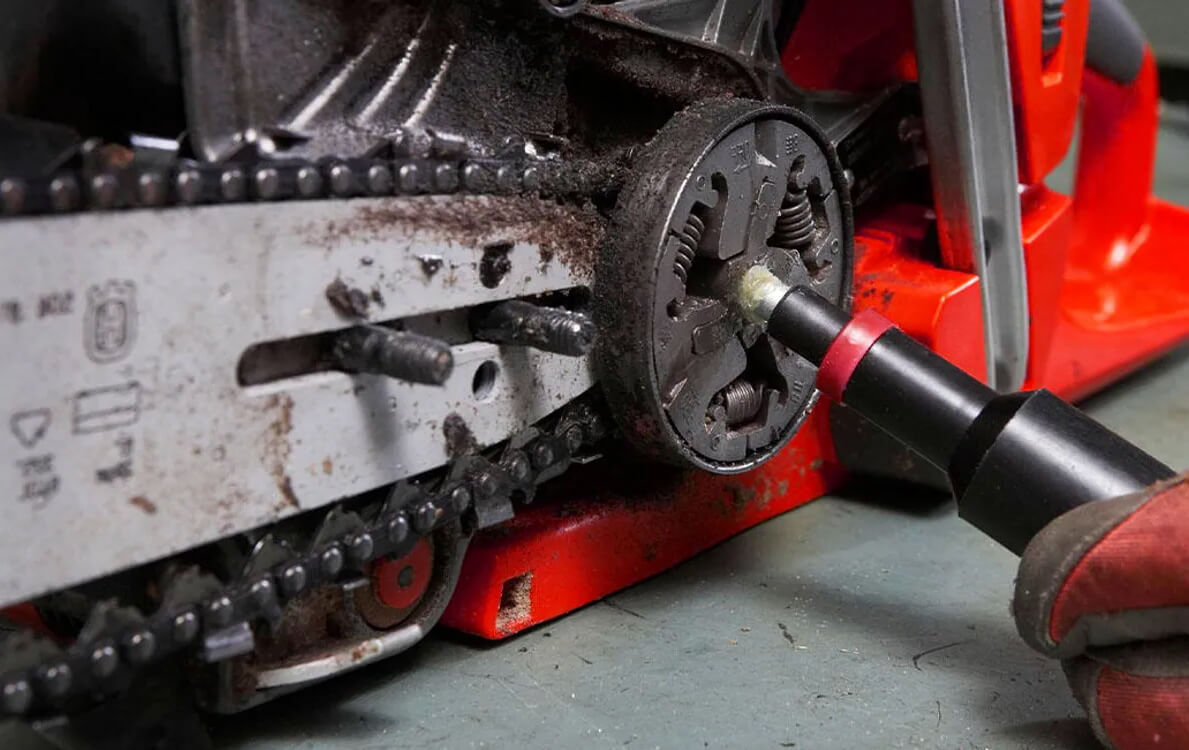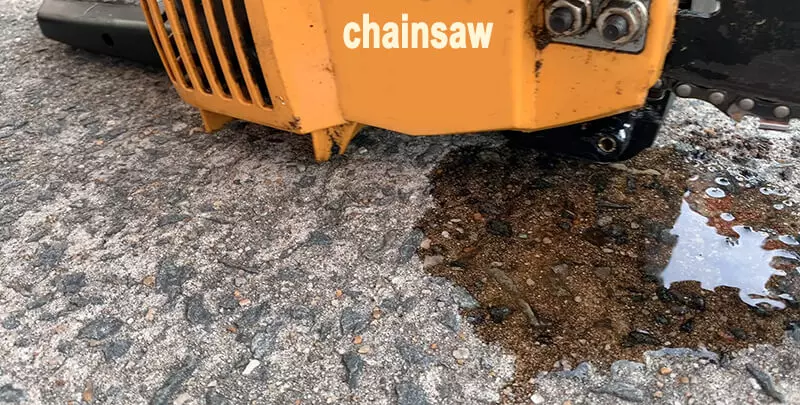08Nov 2024
table of contents

Proper maintenance keep chainsaw running well. Oil leaks are a common problem, can be caused by overfilled fuel tank, damaged or loose oil cap, clogged oil filter etc.
So in this article, BISON will help to know common oil leak causes, signs and solutions. Understanding these helps prevent leaks and keeps your chainsaw running well. Read for tips and advice to solve oil leaks and ensure efficiency.
Oil lubrication is crucial processes for chainsaw. by proper lubrication helps chain run smoothly, minimizes wear, extending the life of the chain and bar, prevents overheating.
Chainsaws have a dedicated lubrication system that ensures oil reaches chain and bar during operation. This system generally consists of an oil tank, an oil pump, and a delivery mechanism.
Oil tank: Lubrication starts in the oil tank where oil is stored.
Oil pump: As chainsaw runs, oil pump pulls oil from tank and sends it into delivery system.
Oil delivery mechanism: The oil is then channeled to chain through a network of paths or grooves. As the chain moves along bar, oil is evenly distributed across its surface, reducing friction and heat.
Know how chainsaw system works is crucial for keeping chainsaw running well and solving potential oil leaks, which can hinder lubrication and harm chainsaw. Next, BISON will explore different reasons for oil leaks to help you solve issue efficiently.
An overfilled oil tank can cause expansion and leaks, especially when the oil temperature is high. The oil tank must be filled to the recommended oil level to prevent this problem.
A faulty or loose oil cap may cause oil leaks. Regularly inspect oil cap and ensure it is tightly secured to avoid spills.
A clogged oil filter can cause pressure to build up in the tank, forcing oil out through weak points. It is recommended to clean or replace oil filter regularly to maintain proper flow.
A faulty oil pump can cause internal or external leaks. The oil pump sends oil from tank to chain. Check oil pump for oil pumpcracks or damage to prevent leaks.
Cracks, holes, or loose connections in the oil lines can cause leaks. It is important to check these lines for obvious damage and ensure that all fittings are tight.
An improperly adjusted oiler screw can cause over oiling and leaks. Follow manufacturer's guide to adjust the screw for proper oil flow.

Worn guide rods and chains can impede the distribution of oil, which can cause leaks. In addition, a damaged guide rod can directly cause oil to leak out. Regular inspection and maintenance are essential.
Temperature changes can make oil and parts expand or contract, causing leaks. Storing your chain saw in a stable environment with moderate temperatures can mitigate this risk.
By understanding these potential causes, you can better maintain your chainsaw and prevent frustrating oil leaks.
Catching an oil leak early can save you time and prevent further damage. Here are some common signs:
An obvious oil spot where the chainsaw is stored or used.
Need to be refilled more frequently than usual.
Excessive oil buildup on the exterior.
The chain looks dry, indicating insufficient lubrication.
The chain smokes due to lack of oil.
The oil level can drop even when the chainsaw is not in use.

Taking preventive measures can help maintain your chainsaw's efficiency and reduce leaks:
Step 1: Check chainsaw regularly for wear and oil leaks.
Step 2: Tighten loose screw and bolts to stop leaks from vibration.
Step 3: Check and replace any old seal and gaskets for a good seal.
Step 4: Inspect oil pipe for any cracks or leaks and change as needed.
Step 5: Clear debris from oil port and make sure oiler is working properly.
Step 6: Adjust the oiler as recommended by manufacturer to guarantee correct oil flow.
Step 7: Operate chainsaw to verify that there are no leaks and confirm that it functions smoothly.
Step 8: Perform regular maintenance to catch any impending problems early and keep your chainsaw running efficiently.
Following these steps will help preventing oil leaks and maintaining the operational efficiency of chainsaw.
Overall, addressing chainsaw oil leaks using methods mentioned, along with performing proper maintenance to prevent future leaks, ensures chainsaw functions optimally. This boosts performance and extends chainsaw's lifespan.
inquiry form here
BISON BLOG, All the latest news and views from Bison Machinery.
Related Articles
Everything you need to know about plate compactor Open Frame vs Closed Frame Generators: What's the Difference? Generator Backfires Trowel machines: Introduction, types, working mechanism and buying guide how to clean a concrete mixerRelated Products